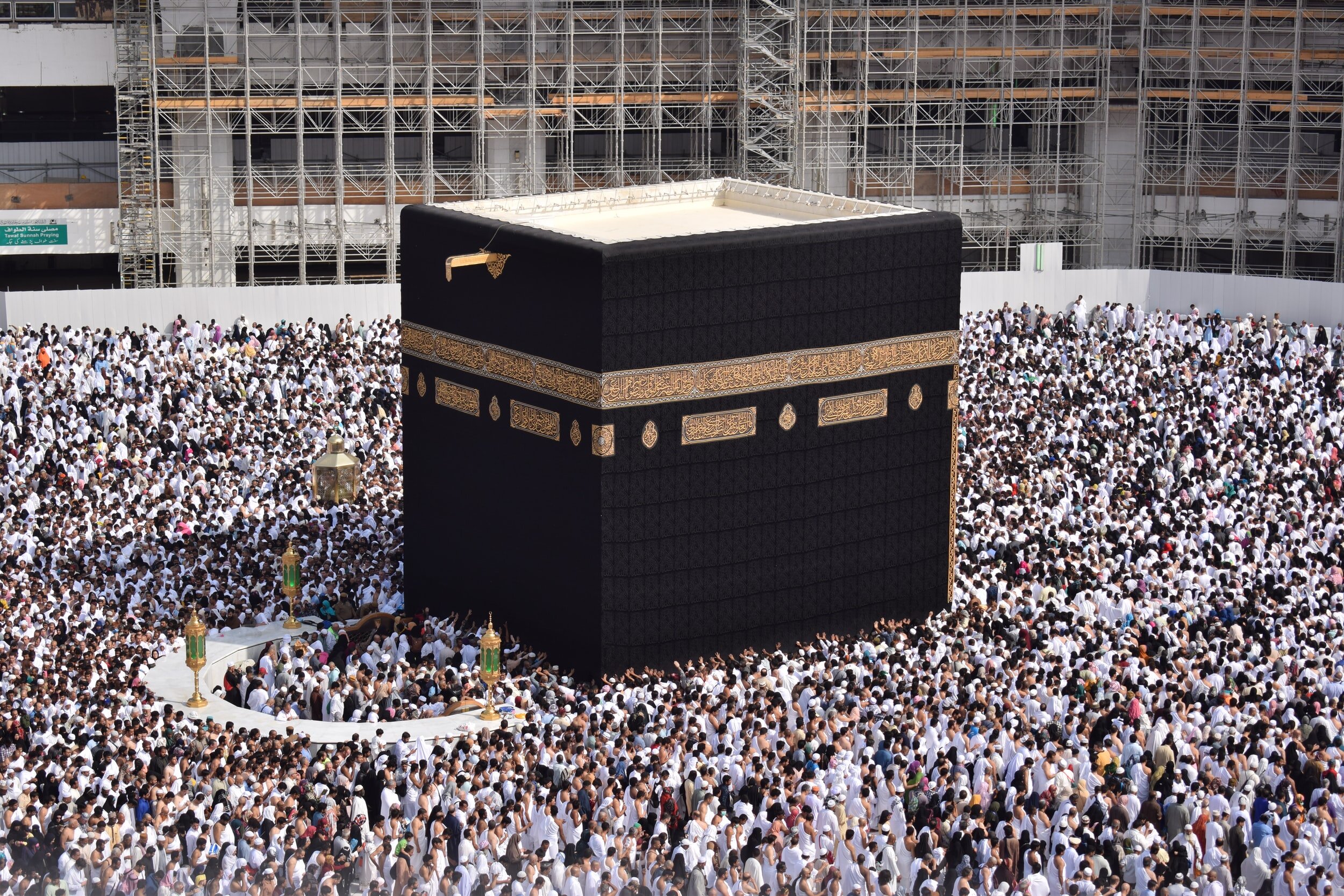Celebrating Al Hajj and Eid Al-Adha
The Ka’ba, a black silk-clad structure in the Middle of the Grand Mosque, Makkah
Each year, Muslims from across the Middle East (and elsewhere) participate in the Hajj – the annual pilgrimage to Makkah. They also celebrate Eid Al-Adha or the ‘feast of the sacrifice’ in remembrance of Abraham’s willingness to sacrifice his son Ishmael at God’s command.
Eid al-Adha is celebrated on the third day of Al Hajj (the Hajj) and lasts for three days. The Hajj is the annual pilgrimage made by Muslims to the Holy City of Makkah in Saudi Arabia. Each year, some two million Muslims from around the world journey to Makkah to make the five-day pilgrimage.
The Hajj constitutes one of the five key pillars of Islam –the five core components of Muslim ritual – the declaration of faith, daily prayer, fasting during Ramadan, charitable giving (Zakat) and pilgrimage. Islam requires all Muslims who are fit and able to travel to make the visit to Makkah (Hajj) at least once during their lifetime.
Saudi Arabia’s Supreme Court determines when the Hajj commences based on the lunar calendar.
On arriving at Makkah pilgrims enter a sacred state of purity known as ihram. Rituals commence for the pilgrim at sundown on the eve of the first day. The first ritual is the tawaf, in which pilgrims walk seven times anti-clockwise around the Ka’ba – a black silk-clad stone structure situated in the Middle of the Grand Mosque. This is to demonstrate the equality of all Muslims.
The second ritual is Al-Safa and Al-Marwah, where pilgrims run seven times between the mountains of Al-Safa and Al-Marwah, where it is believed Ibrahim’s wife Hagar did when in search of water for her baby Ishmael.
For the third ritual pilgrims travel 14km uphill at dawn, from Mina to Mount Arafat, to pray. Mount Arafat is where the Prophet Muhammad is believed to have given his last sermon. On this day pilgrims pray Al Duaa, where they ask for forgiveness and guidance from God. At sunset pilgrims walk 9km from the Mount to Muzdalifah where they spend the night praying under the stars.
Next, pilgrims take part in the fourth ritual: ‘stoning the devil’. Pilgrims journey from Muzdalifah toward Mina, where they perform the act of throwing pebbles to represent Abraham’s willingness to sacrifice his son. When the devil attempted to dissuade Abraham from this act of sacrificial obedience to God’s command, Abraham threw stones to fight him off.
On the tenth day of the month, the three-day festival of Eid al Adha begins. Pilgrims perform the animal sacrifice known as Qurbani or Udhiya. This ritual recalls Abraham being gifted a ram to sacrifice, by angel Jibril, to replace his son Ishmael. Eid al Adha is considered to be one of the holiest feasts in Islam and is celebrated by Muslims not just in the Middle East, but across the world.
For those who are not in Makkah, the Udhiya- the act of animal sacrifice – is performed near a Mosque. In the Middle East, those who can afford to (and many will save for a long time ahead of the feast) will sacrifice a healthy sheep, lamb, goat or camel. The Udhiya meat is then shared with family members and friends from the community: one third to the person who sacrificed the animal and to their family, one third to friends and the final third is donated to people in need. The powerful symbolism of Eid Al Adha is a person’s willingness to sacrifice something precious in the name of God – this being the case, many Muslims will also donate money or engage in some form of community service as part of the festival.

